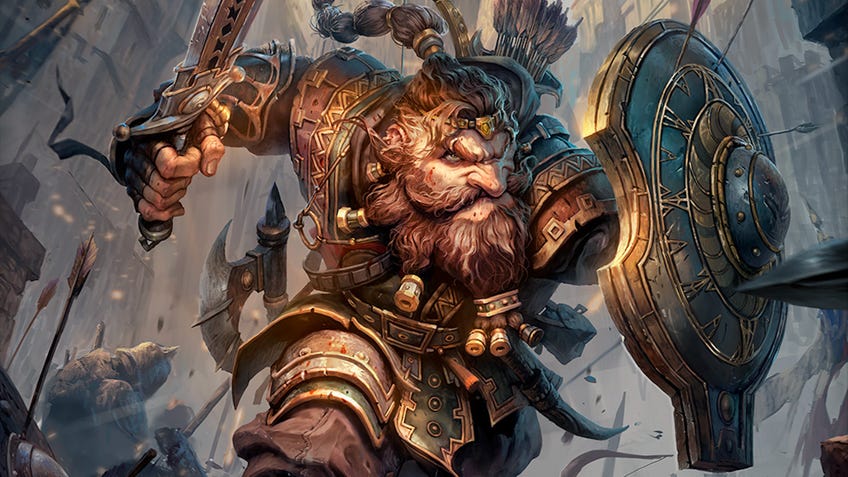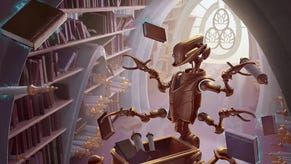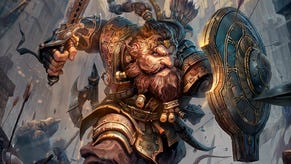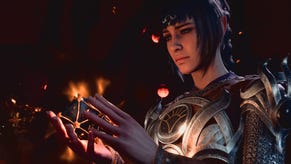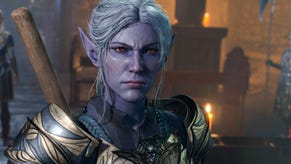Dungeons & Dragons says “no generative AI was used” to create artwork teasing 2024 core rulebooks
Artist Nestor Ossandón defends their process amongst social media allegations fanned by anti-Hasbro sentiment.
Dungeons & Dragons publisher Wizards of the Coast has responded to recent claims that a piece of artwork teasing the popular tabletop RPG’s upcoming 2024 core rulebook editions was created primarily using artificial intelligence. The company denied the use of generative AI tools or other large language models (LLM) after conferring with the artist, who added their own defence to the allegations.
Several users on X.com began targeting the artwork that first appeared at Wizards of the Coast’s PAX Unplugged 2023 panel and was used to discuss differences between D&D 5E’s Players Handbook and the edition hitting shelves next year. It depicted a dwarf warrior leaping over debris and bodies on a pitched battlefield, and a few would-be sleuths confidently declared that it must have been created by an LLM such as DALL-E2, Midjourney, Stable Diffusion or the myriad other tools circulating online.
The now mostly-deleted posts derived a lot of confidence from a webtool that supposedly analyses images and spits out a calculated percentage chance that they were created by AI. Mr. Dwarf Warrior, created by established Magic: The Gathering artist Nestor Ossandón, clocked high on the probability and lit a fire under folks who were already motivated to criticise the Hasbro-owned Wizards of the Coast due to the devastating layoffs that executive enacted last week.
Except, that was not the case. Wizards of the Coast posted to the D&D Beyond's X.com account late on Dec. 18th, saying, “We became aware of community concerns that generative AI was used in an art piece we recently teased. We confirmed with the artist that no generative AI was used, which is consistent with our artists guidelines restricting it.”
Ossandón spoke to ComicBook writer Christian Hoffer, sharing early sketches and work-in-progress versions of the illustration. “"First of all, I do not use artificial intelligence (NOT AI) for my work and no one but you and my director have asked me." Nestor Ossandón said in an email to me. "And that image is completely painted. It is one of my favourite recent jobs that I have been able to do,” they told ComicBook via email.
“And if you see other old works, you can see that my tendency is very similar when it comes to painting. I always play with warm and cold ones on my face. Thanks to the work together with the art director. They give me the freedom and appropriate time to develop it,” Ossandón continued. “This character is completely painted from scratch with a grey and superimposed colour technique. Then I paint the cold tones to give atmosphere and light. It took me more than two weeks and my director was very happy with this work."
Concerns over Dungeons & Dragons publishing artwork chiefly created by AI tools is not totally unfounded, as players and fans alerted the company that a contracted artist on Bigby Presents: Glory of Giants had submitted several illustrations with heavy AI manipulation. Automated art production using LLMs - which are often trained on massive amounts of unattributed and unpaid artwork - both cuts humans out of any royalty payments but also restricts an already precarious job field. Wizards of the Coast claims it maintains an artist guideline that prohibits the use of generative AI tools, but the company has yet to publicly post that policy.
Add to that simmer pot the public outcry over 1,100 job losses at Hasbro, which included substantial cuts to both Dungeons & Dragons and Magic: The Gathering teams, and it’s easy to understand why some fans are looking for a fight. Executives are almost certainly considering how AI could replace paid labour within their companies, but zealous policing of artists on social media only creates more stress for individual creators already being squeezed from every side. Ossandón seemed unconcerned in this case, but future AI art detectives should perhaps employ a measure of scepticism before firing off their hot allegations - Hasbro stands to lose nothing, but the artists are never so lucky.
